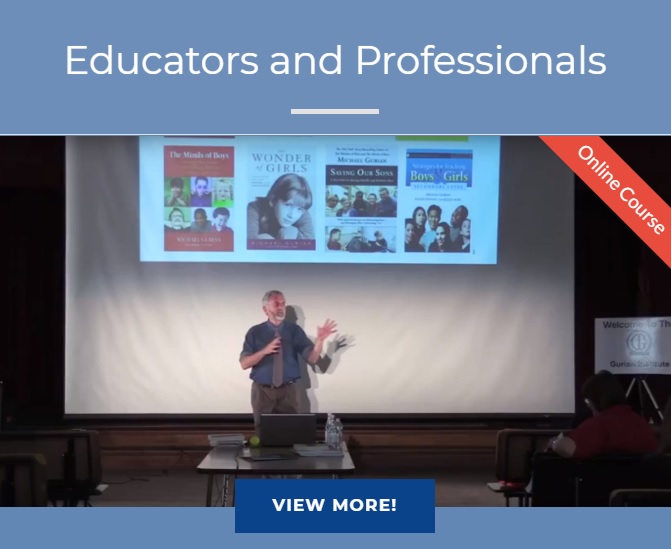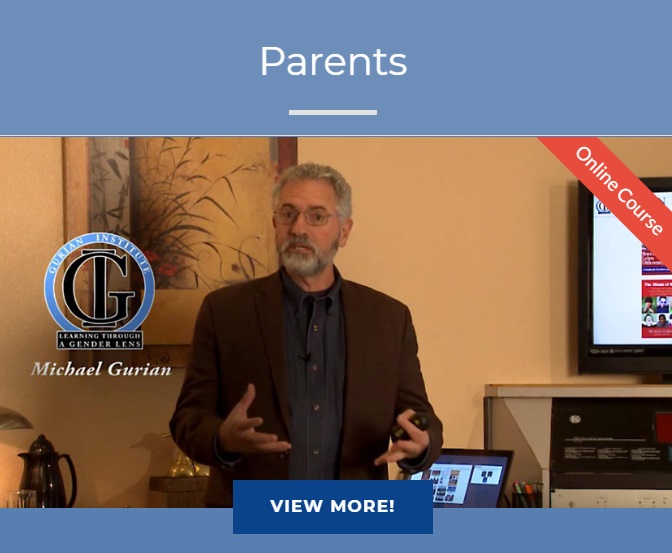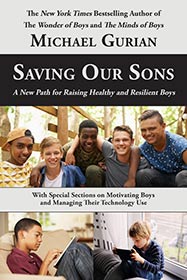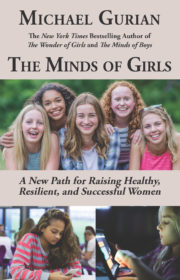 Book Study for “Boys and Girls Learn Differently!”(Paperback Edition)
Book Study for “Boys and Girls Learn Differently!”(Paperback Edition)
Teachers and parents alike have long intuited that boys and girls learn differently. With brain-based research, improve a child’s education by knowing the very nature of his or her mind.
Monthly Session Plan
Take the first month of school to read the introduction and the first chapter, then convene the faculty to begin the book study. No meeting should last longer than one hour. The faculty would be responsible for reading one chapter each month thereafter in preparation for the book study faculty meeting.
Facilitate optional/differentiated activities for each chapter. Groups or individuals should choose at least one activity at each monthly meeting. Some of the options are more involved and take more time.
Others are simple and quick to complete, leaving time for the group to select additional activities. By participating in these activities, you will develop skills for implementing similar activities with your students, implementing the important things you learn about nature-based theory and gender differences in learning.
Chapter 1
General Discussion Questions: After reviewing, brainstorm examples of how differences between the male and female brain show up in your classroom. For example: when a boys’ brain goes to a “rest state” what happens to his attention in the classroom? What can you do to help?
Activity Option #1
Faculty members would work individually or as learning teams of 3 to 4 members to identify similarities and differences in males and female brains that seem most essential to learning (see the chart on pages 20-26). The group would then organize their comparisons and contrasts in Venn diagrams. Finally, a compilation of all the information would then be organized into one huge Venn diagram for faculty reference throughout the book study.
Activity Option #2
Create individually or within learning teams 3 or 4 comic strip or cartoon characters that represent the effect of serotonin, vasopressin and oxytocin on male and female students.
Activity Option #3
Write a 3 paragraph summary describing hormonal differences and the role of these hormones in the womb and at puberty. Exchange your written work with someone in the study group. Read and discuss the summaries together.
Chapter 2
General Discussion Questions: How goes gender difference manifest in learning styles? What strategies might you implement in your classroom to make sure both boys and girls are being engaged in learning?
Activity Option #1
Identify key terms related to areas of learning style differences from pp 44-49. Write the word and definition on separate index cards. Shuffle the cards and deal. Play the game just as the children’s card game Fish. The one to make the most matches and run out of cards first is the winner.
Activity Option #2
Align Howard Gardner’s 7 intelligences discussed on pp 49 thru 52 with the 10 areas of brain based learning style differences. Use the grid paper provided. List the 7 intelligences across the top of the grid. List the 10 learning style differences vertically down the left side of the grid. Put an X where there is an intersection of those that your group sees as a connected or related. Many will of Gardner’s intelligences will connect with more than one learning style difference. Discuss with your group the connections between these two bodies of work.
Chapter 3
General Discussion Questions: Secure bonding and attachment are crucial for both boys and girls to be successful early learners. How does lack of secure bonding and attachment potentially affect early learning success for boys? For girls? What can a classroom/school do to intervene and improve the boy or girls chances for educational success?
Activity Option #1
Each group will be assigned one of the following role play situations/ activities:
1. The treasure game from pp 107-109
2. Late Last Night p 111
3. Abdul’s blocks pp 111-113
4. Tommy’s snack time penguin p103-104
5. Jerrell and Hannah pp 90-91
6. Bonding rituals pp 80-82
Act out the scenarios for the whole group.
Activity #2
Write a poem/haiku related to the plant/sun allegory on p.75
Activity #3
Discuss the non-medical options from pp118-119. Then extend the list from your personal experience.
Chapter 4
General Discussion Questions: Brain-storm specific strategies that help classrooms engage boys/girls in learning. For example: What is the best physical design for a classroom for young boys? What difference does the physical design of the classroom make?
Activity Option #1
Write a letter to the Board of Education in support of outdoor physical activity based on what you read on pp 136-138.
Activity Option #2
Select a member of your group to assume the role of Carol Myers (pp141-142). Act out what she did and said to increase bonding and brain based learning.
Activity Option #3
Write a musical/melodrama based on Jenny Peterson (pp142-143), Jemal, Tyrell and Joseph with each member of your group taking the part of one of these 4 characters. Give a dramatic portrayal.
Activity Option #4
Design a pamphlet to publicize Susan Colgan’s Monarchs. P143
Chapter 5
General Discussion Questions: Puberty is a time of great physical change for both boys and girls. These changes can derail even the best students. What can the middle school do to minimize the risk that boys or girls will encounter learning problems and/or behavior issues during middle school?
Activity Option #1
Half of the faculty will be reporter/journalists and the other half will be teachers/administrators being interviewed for a TV news broadcast about the separate sex education initiated at your middle school this year. Prepare for your role by reviewing pp.203-211and p.251 Select a partner from the opposite group. Conduct the interviews.
Activity Option #2
Our faculty will take on the role of one of the 6 Hat groups described below to look at school uniforms. Each group will prepare a presentation given from the point of view of the hat their group is wearing.
White hat group=Data What does the research say? What would be the cost of implementation?
Yellow hat = Positive What are the positive aspects of this proposal? What good could come out of it?
Black hat= Caution What are the downsides?
Green hat = Growth What will be learned as result of this? How will we change and grow as a result?
Blue hat = Process What information will all stakeholders need in order to understand this idea? How will this information be shared? Who could put the process together?
Red hat=Emotion How will each stakeholder group react to this idea ? Who will be upset by this?
Activity Option #3
Demonstrate the peripatetic counseling method discussed in Chapter 5.
Activity Option #4
Illustrate the elephant story from p232.
Activity Option #5
Predict the outcome of such programs as BROTHERS and the similar program enacted at Black Diamond Middle School.
Activity Option #6
Why would a school mandate sports participation for all students. List as many positives as your group can compile in the allotted time.
Chapter 6
General Discussion Questions: How can teachers and parents continue to provide positive, appropriate adult guidance and supervision to their high school age adolescents while at the same time helping teens develop a sense of responsibility and independence?
Activity Option #1
Jig Saw the chapter by first dividing the faculty into groups of 4.
Divide the reading material or study material into four equal sections with each team member assigned one of the 4 sections. They will be the experts on that section only.
Team members reread their assigned section individually.
The experts from each group reconfigure themselves so that all the group members assigned part 1 are now together, all those assigned part 2 are now together and so on.
Expert group members meet, share, and design teaching strategies on how to teach their section of reading material to their original group.
Teams reassemble.
Experts take turns teaching their section to their groups.
Lead a whole faculty review discussion of Chapter 6.
Activity Option #2
Walk About Survey.
Team members move around the room posing the following questions to as many faculty members as they can in the allotted time. The responses are recorded on a provided form.
Questions:
1.What are three things you recall about what you have learned as a result of our book study?
2. What observations/insight can you make as a result of your learning?
3. How will you apply what you have learned to your work with students?
The form for recording the results of these questions would be a chart titled ‘Walkabout Review’ with three columns with the following headings and room for jotting down responses :
1. Recollections
2. Insights
3. Applications
Activity Option #3
Create a non-linguistic representative summary of the Chapter using no words.
Special thanks to Marilyn Altman, Gurian Institute Certified Trainer, for the great activities!
© Michael Gurian 2018. Developed by the Gurian Institute Training Division.






